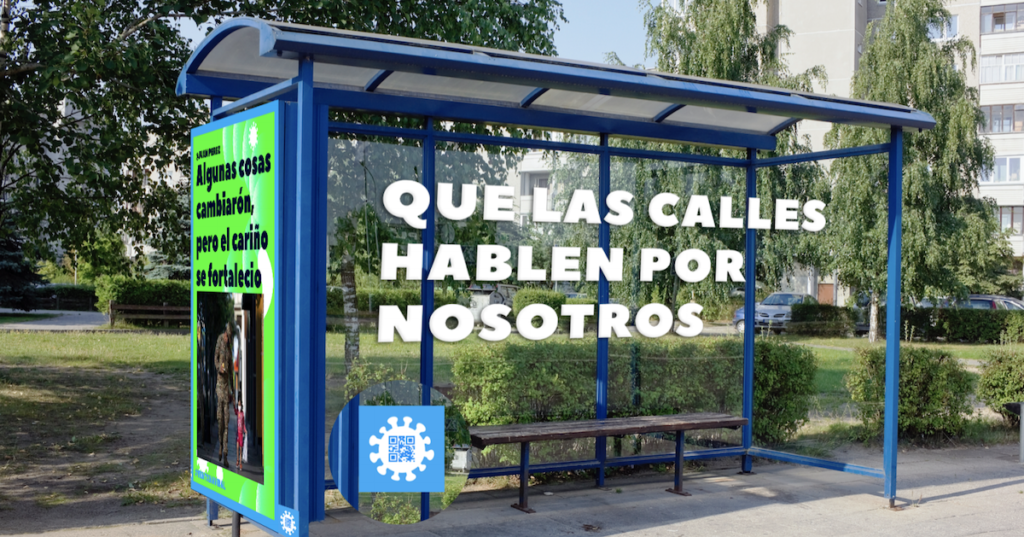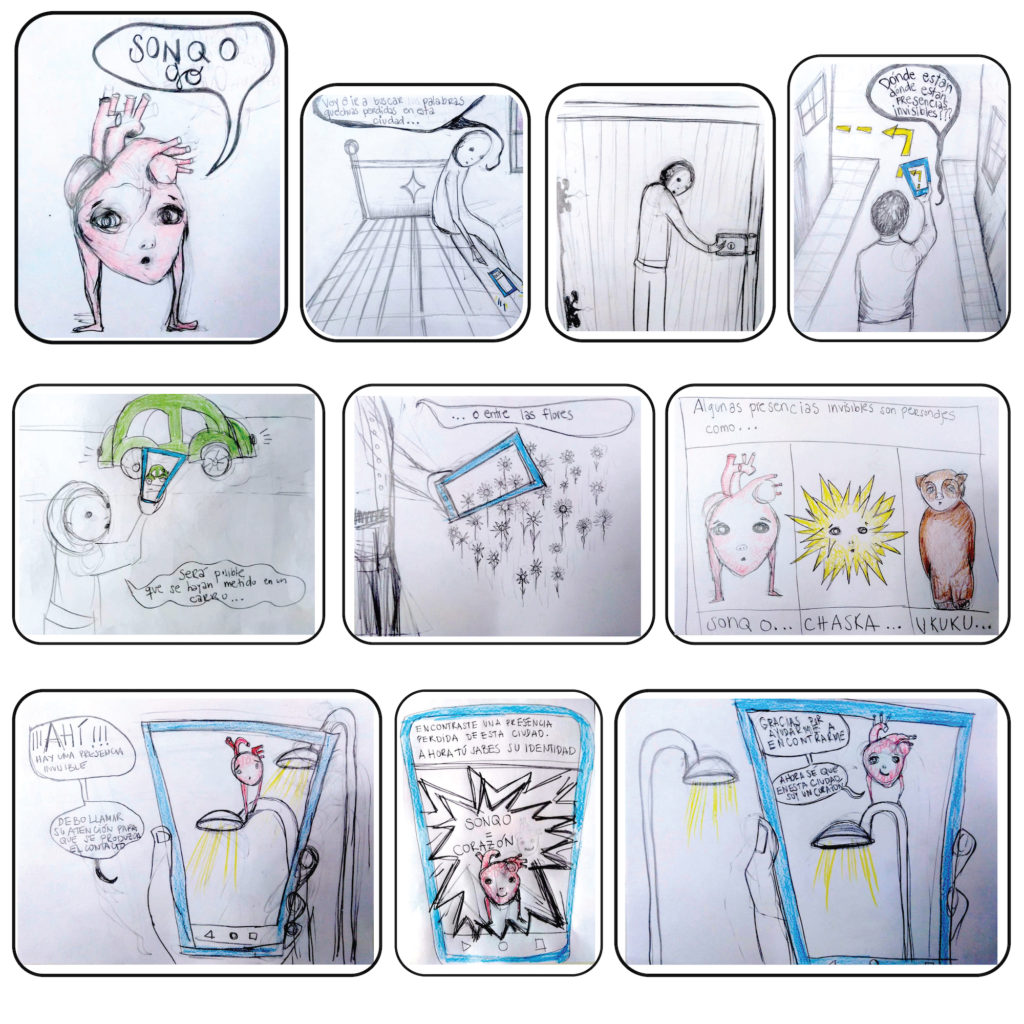*View the interactive works in the virtual gallery (you must use the Firefox browser).
Decolo-augmented Reality by Jesed Mateo Montejo
Lima is a city of multiple narratives, where monuments essentially represent our memory, and in their images we present people, scenes and speeches that are considered worthy to remember for a society or nation. My project proposes a review of the monuments of Lima, from a decolonial and anti-patriarchal lens, to unveil different discourses within Lima’s urban dynamics. Augmented reality works like a screen that unfreezes the portrayed moment, and uses the animation and sounds as triggers of unnoticed symbols. The chosen monument is that of Christopher Columbus, located on one of the busiest streets of Lima: Paseo Colón. The augmented reality trigger shows us a scene of women’s struggle, representing (our) America and Columbus, insisting on imposing the cross, the church, an ideology …. a colonial heritage. The sounds mix the cry for aid with the phrase “land in sight,” deformed and destroyed, which ends up sounding like a beast. Test it here.
——————————
There is No Virus Here by John Olivares Herrera
Imagine street posters or billboards as virtual mailboxes where you could send and access photos, illustrations, messages, Tweets, Instagram stories, GIFs, etc. about how we would like to be after the pandemic. The bus stops on the streets of Lima are very crowded places, and people could see messages from both hopeful and fatalistic views, and from that experience people could be motivated to be better as a society. The idea is to learn from this moment in history.

——————————
Memory Tree by Randy Alva Peñaloza
This sound art project was born due to the recent and worrying figures shared by Global Forest Watch regarding logging levels in the country. One may think that by this point, we should have already learned our lesson about the terrible effects of natural depredation, but the figures prove otherwise. Peru is positioned in fifth place worldwide and third in Latin America in the ranking of countries with forest loss (162,000 acres).
Lince, a district of Lima and the center of investigation of this project, has 8 beautiful parks which improve the quality of lives of its inhabitants. Nonetheless, the district still lacks at least 6.46 m² of green areas per person according to the WHO and UN’s recommended levels. As neighbors and citizens, we must rethink how to protect and preserve our existing natural resources as they are attacked and violated on a daily basis by private companies or poor district governance.
This project looks to revalue and protect the natural patrimony of the Lince district through the collection of conversations and short stories from the collective memoir of its neighbors. Each one of these short stories will be recorded and digitally linked to a specific tree, belonging to any of the 8 urban parks in the district. QR technology will be used so that any visitor or walker can scan and listen to the memoir that the tree is keeping.
In addition to this proposal, I present an alternate vision of the park as a space where colors and sounds transport us to the universe described by Suzanne Simard, a forest ecology teacher who studies and proposes that there is a chemical communication between trees through fungus and roots.
Here are links to the process, virtual project, and the video in Spanish
——————————
Respirarbol (Breathing Tree) by Omri Nuri and Lucho Pacora
Respirarbol is an interactive web application that, in a playful and virtual way, invites us to tranquility and meditation through a simple breathing exercise guided by a tree that opens and closes. Every tree has a relaxing melody that when mixed with other trees, creates a random sound composition. Respirarbol is a tool that helps people’s mental health, at the same time helping people develop a greater ecological awareness about the vital importance of trees on our planet. This application can be used by both children and adults.
——————————

Sonqo Go by Claudia La Hoz
This project addresses the “invisible presence”of Quechua communities in Lima, which “exists without existing.” For the project, Quechua serves as a portal to access a tradition that is an alternative to a society in crisis.
The work is a virtual game where you can walk the streets of Lima to search for characters that are lost in the city. These characters are Quechua words. The moment you find them, you also discover what they mean. The idea is that Quechua words are lost among us until we know what they mean and we attach importance to them.



